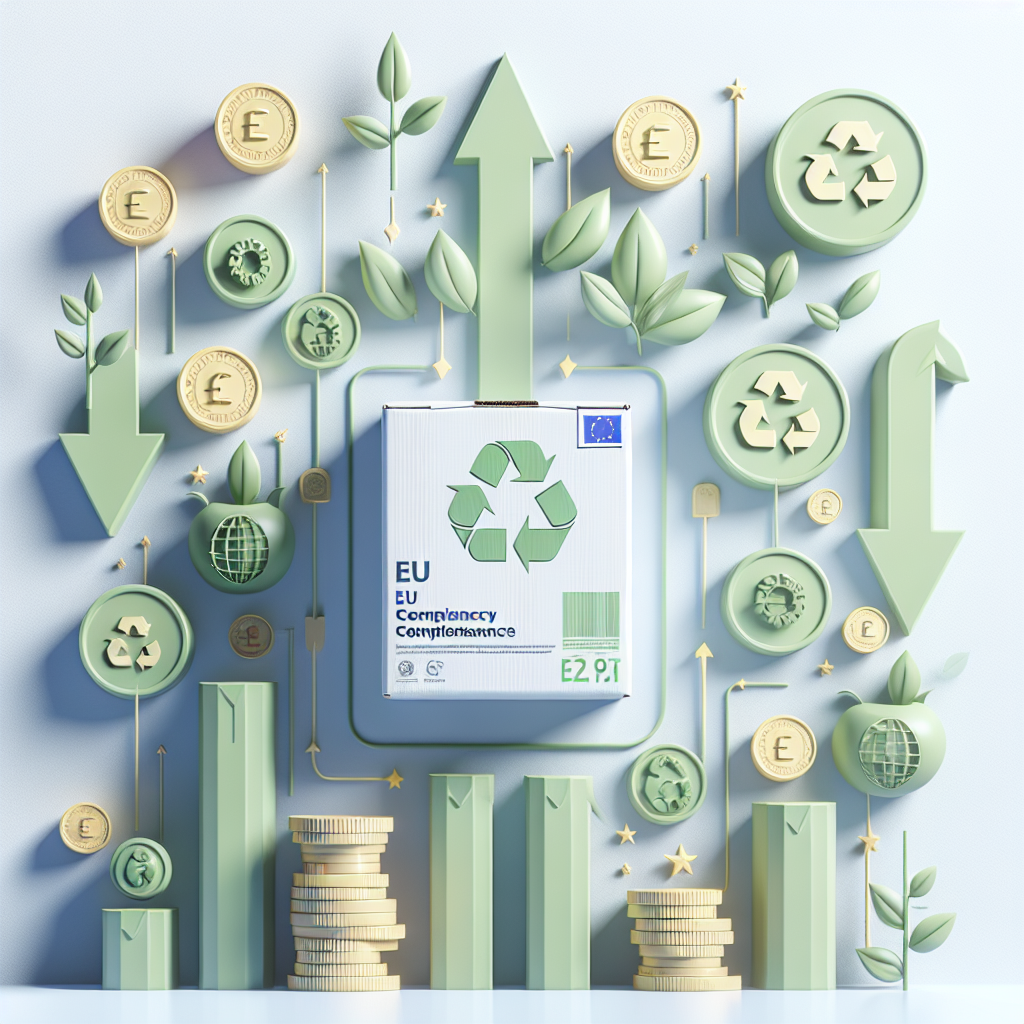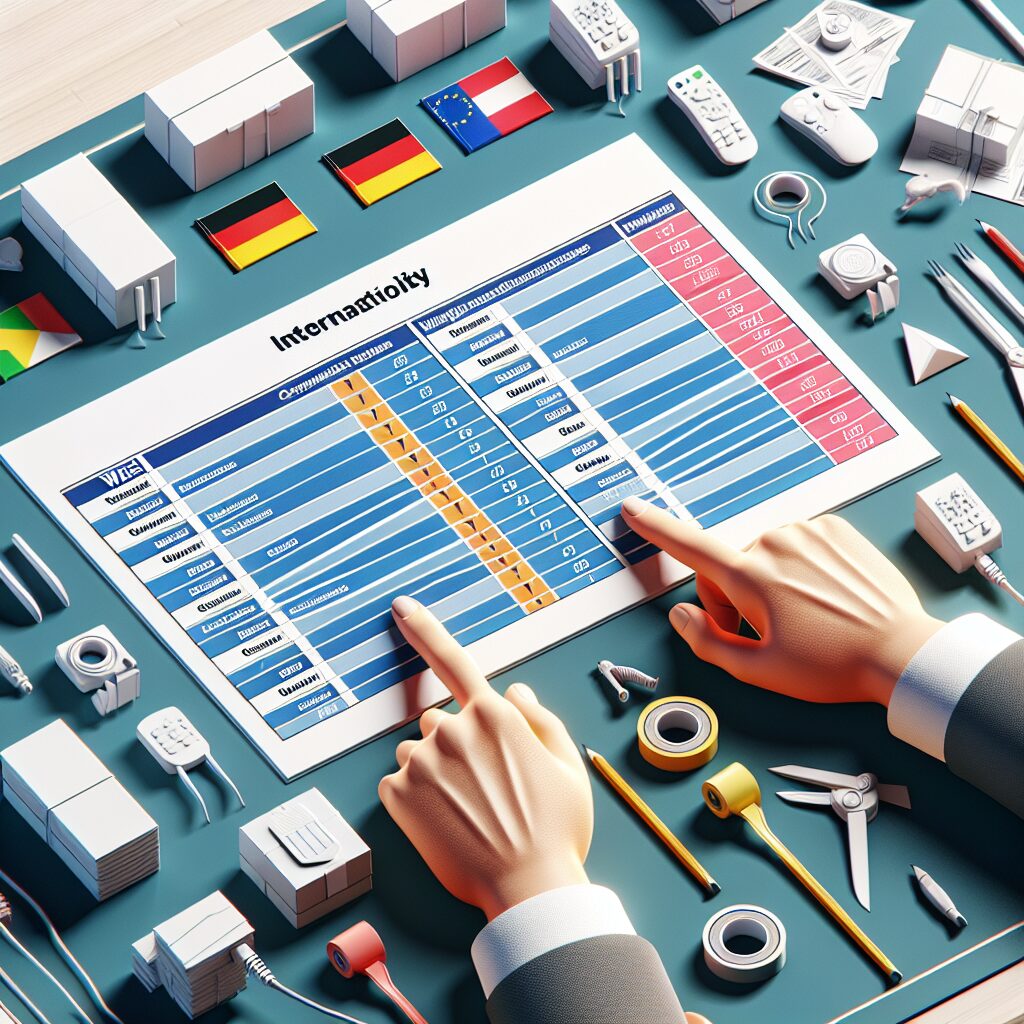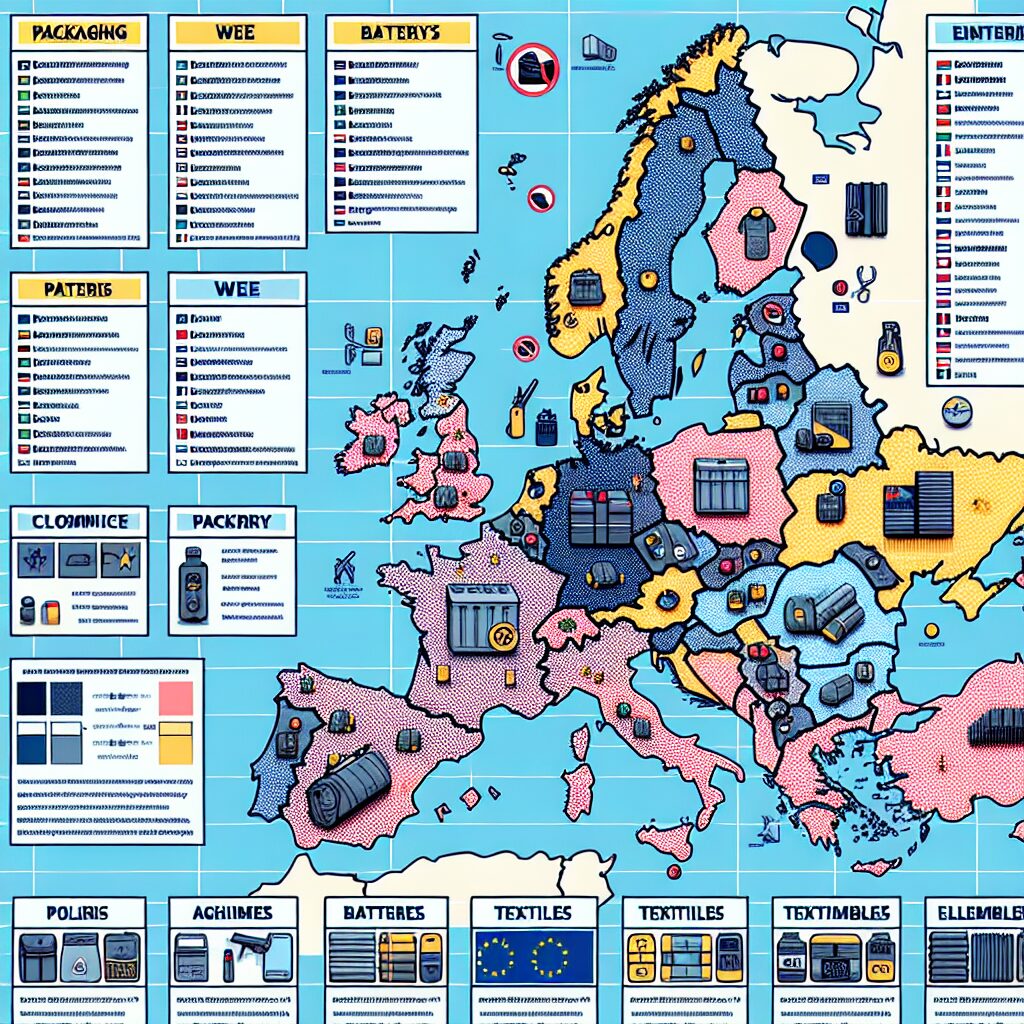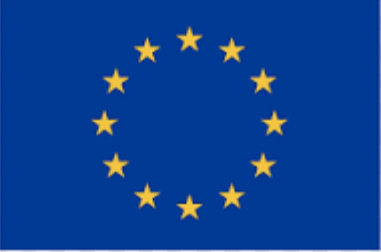About eldris
epr.eldris.ai leads the EPR sector, in fast, automated, AI Agent EU Complaince. LUCID Packaging, WEEE, and Battery Compliance for Brands, E-Commerce and Service based businesses expanding into the EU.
In This Article
- Understand and track EPR fees in every EU country where you sell products.
- Leverage eco-modulation to reduce fee burdens through sustainable packaging.
- Prepare for major packaging regulatory changes taking effect by 2025.
- Use available tools and calculators to estimate and manage your EPR costs.
- Avoid penalties by maintaining active registrations and timely reporting.
Understanding EPR Fees in the EU
What Are Extended Producer Responsibility Fees?
Extended Producer Responsibility (EPR) Fees & Regulations were created to shift the financial and logistical burden of waste management from governments to producers. In essence, if your business places products or packaging on the EU market, you are likely subject to EPR schemes. These schemes mandate that producers—whether manufacturers, importers or brand owners—are financially liable for the collection, recycling and disposal of their packaging and products at end of life.
The primary motivation behind EPR is to incentivise producers to design sustainable products and packaging by internalising the costs of waste disposal. The fees can vary significantly depending on the materials used, market volumes, and local legislative frameworks. Critically, if you operate across multiple EU countries, you may be accountable in each market where your goods are sold, requiring registration with national Producer Responsibility Organisations (PROs).
Failure to comply can result in significant fines, shipment blockages, and platform delisting across leading European marketplaces. Therefore, understanding EPR Fees & Regulations is not simply a legal formality—it is a vital business requirement for sustainability, compliance, and market access.

Eco-Modulation: A Sustainability Incentive
How Material Choices Impact Your EPR Fees
One of the most significant developments in recent EPR legislation is the adoption of “eco-modulated” fee structures. Essentially, eco-modulation means that the amount a producer pays under EPR is influenced by the environmental impact of the packaging or product placed on the market. Materials that are easier to recycle or that have a lower carbon footprint typically incur lower fees.
For example, a producer who uses recyclable mono-materials such as uncoated cardboard will pay considerably less in EPR fees than one who relies on multi-layer plastic films, which are harder to separate and recycle. Some countries offer bonus schemes or penalties based on recyclability, recyclate content, and even whether product packaging includes clear disposal instructions for consumers.
This dynamic pricing model is designed to encourage more eco-conscious design decisions. Smart producers can take strategic advantage of this model by re-engineering packaging to optimise both sustainability and bottom-line performance. Monitoring updates to local eco-modulation criteria is crucial, as they are periodically revised in line with EU sustainability objectives.
“Eco-modulation acts as both a fiscal lever and a design compass—it rewards responsible packaging decisions with tangible cost savings.”
Packaging Regulations You Must Know by 2025
By 2025, sweeping updates to EU packaging regulations will further intensify obligations for compliance. These reforms aim to ensure that all packaging within the EU can be reused or recycled economically, thereby supporting the Circular Economy Action Plan. This legislation affects domestic producers and cross-border e-commerce platforms alike.
Requirements include: mandatory recyclability thresholds, labelling directives that specify disposal instructions, declaration of the amount of recycled content, and potential packaging bans on certain problem materials such as polystyrene and PVC. Sellers must also begin reporting the full environmental impact of their packaging, including LCA (Life Cycle Assessment) data in some jurisdictions.
To avoid non-compliance, now is the time to audit your product line for materials that may become non-compliant. Additionally, aligning with Learn more about EU Packaging Compliance & Extended Producer Responsibility can streamline adaptation to evolving labelling and measurement standards. These rules will not only impact cost structures but also branding narratives and consumer trust.
Calculating Your EPR Costs With Modulated Rates
EPR Fees & Regulations are rarely flat-rate. Understanding the calculation basis is essential for accurate budgeting and cost prediction. Typically, PROs calculate fees based on volume or weight of materials, material type, and modulated eco-profiles. Added to this are supplementary levies for non-recyclable or mixed-material compositions.
Let’s say you sell a line of cosmetic products in glass jars with cardboard outer packaging. Your EPR fees will differ for each component: glass, metal tops, printed cardboard and any plastic films. In countries like France and Germany, you will likely encounter detailed modulation tables that segment these materials by recyclability and market clearance thresholds.
Some PROs provide digital calculators to estimate your liability, including bulk upload spreadsheets or API integrations. Leveraging these tools makes early estimation and reporting significantly more manageable. For broader accuracy, factor in fluctuations across reporting periods, as minimum thresholds and tariffs adjust annually.
Strategies to Reduce EPR Compliance Fees
Minimising EPR outlay starts with product and packaging design. Conduct an audit of your SKU range and identify which materials incur the highest modulation fees. The lowest hanging fruit is often replacing composite packaging components with mono-materials or using certified recyclates.
Furthermore, reduce void fill and secondary packaging. Not only does this decrease fees by volume and weight, but it also improves sustainability credentials. Another effective tactic is switching to inks and adhesives approved under European recyclability standards, such as those endorsed by CEFLEX and RecyClass. Businesses should also keep in mind that some EU countries offer additional EPR exemptions or credits for demonstrably sustainable solutions.
Every revised packaging design should be reviewed for compliance with current and foreseeable eco-modulation criteria. Proactive reformulation now can sidestep penalties later and unlock considerable annual savings across larger product portfolios.
Marketplace & Seller Responsibilities Explained
Marketers, e-commerce sellers, and drop shippers must all engage with EPR compliance in the EU—even if they never physically handle goods in the region. Platforms like Amazon, Etsy and Otto have introduced strict EPR compliance requirements for third-party sellers operating in countries such as France and Germany.
You will likely need to submit a valid producer registration number, align with a licensed PRO in each territory, and establish formal declarations of EPR responsibility. Marketplaces may also require monthly or quarterly reporting on packaging quantities sold within the jurisdiction. Sellers failing to comply can be de-listed or penalised until registration is complete.
As marketplace scrutiny tightens via digital compliance filters, even direct-to-consumer sellers must remain agile. Consider utilising Read a related article for tailored compliance guides segmented by platform and product category.
Country-Specific EPR Variations in the EU
While EPR is harmonised conceptually across the EU, its implementation is highly decentralised. Each Member State enforces its own versions of the Directive, institutional infrastructure and fee mechanisms. For instance, Germany’s VerpackG law mandates participation in the LUCID registry and imposes audits for larger businesses.
France employs detailed eco-modulated rates via several sector-specific PROs, while Italy’s CONAI system stipulates compliance even for promotional or gift packaging included with sold goods. Retailers in Greece are under the purview of the Hellenic Recycling Agency, with particular emphasis on label compliance.
For multinational businesses, the key is to centralise regulatory intelligence while delegating tactical compliance to accredited local agents where necessary. Monitoring these country-specific schemes is vital, and subscribing to Choosing the right EU compliance partner for marketplace success can ensure that your business is always compliant with local adaptations of EPR frameworks.
Forecasting Fees & Budgeting for Regulation Shifts
Regulatory roadmaps such as the European Green Deal hint at intensifying EPR obligations over the next decade. Budgeting for EPR fees must become a standard component of financial forecasting. Companies should create multi-case scenarios accounting for fee escalation, increased material scrutiny, and carbon offsetting requirements tied to packaging lifecycle assessments.
Useful strategies include establishing an EPR reserve fund, locking in long-term supply contracts for recycled materials, and investing in software tools that provide real-time updates on regulatory shifts and material fee impacts. These forecasting tools help companies quickly adapt to legislative changes without destabilising pricing or supply chain structures.
Embedding EPR into C-level strategic priorities ensures that compliance is not just a cost but an operational advantage in brand positioning and ESG performance.
Common Mistakes Sellers Make With EPR
Among the most common mistakes is assuming that non-EU sellers are exempt—a dangerous misconception. Another frequent error is submitting underreported packaging volumes, leading to costly penalties upon audit. Many newcomers overlook renewing their PRO registration after the annual expiry or fail to submit timely EPR declarations.
Additionally, companies often misclassify their packaging under generic fee bands, missing out on eco-modulation discounts. Others neglect to integrate EPR data within their ERP or inventory systems, resulting in manual reporting errors.
Avoiding these pitfalls requires an internal EPR compliance SOP (Standard Operating Procedure) and periodic staff training to reflect updates in national and EU-wide regulations.
Choosing Packaging That Aligns With Eco-Modulation
To capitalise on eco-modulated fee structures, packaging choices must be both functional and compliant. Aim for mono-material packaging, such as all-aluminium or all-paper solutions, that are widely recyclable in EU waste streams. Avoid problematic materials like black plastic or multilayer composites without recyclable coatings.
Where plastics are necessary, favour materials with existing reuse and recycling pathways—like HDPE, PET or PP—especially if they come with validated recyclate content. Labels and adhesives should be water-soluble or peelable to facilitate material recovery.
Design should also consider compactness, stackability, and minimal ink coverage. Not only do these choices align with eco-modulation incentives, but they also enhance sustainability perception among consumers.
Tools & Checklists for EPR Fee Management
To manage EPR requirements effectively, businesses should maintain a centralised digital checklist tracking annual registration numbers, country-level PRO affiliations, scheduled reporting windows and packaging metrics by SKU or product line.
Specialist software platforms offer EPR compliance modules equipped with automation for report generation, fee calculators, and alert systems. Integration with accounting platforms ensures accurate fee reconciliation. Excel-based trackers, though less robust, can suffice for early-stage operations if maintained rigorously.
Regular audits and simulations should be conducted to validate submitted data, especially prior to PRO declarations. Creating a compliance roadmap in coordination with sustainability and finance teams minimises oversights and positions your operation for long-term cost efficiency under EPR regulations.
Conclusion: Optimize for Cost and Compliance
As EPR Fees & Regulations evolve, businesses must navigate a challenging landscape of compliance, sustainability, and financial strategy. Proactive engagement with eco-modulation models, platform mandates and country-specific variations is key to reducing both risk exposure and operational costs.
Investing in smarter packaging design, lifecycle analysis tools, and real-time regulatory tracking platforms equips producers and sellers to stay ahead of impending deadlines and shifting regulations. Ultimately, turning EPR from a compliance burden into a design and operational advantage is what will distinguish successful brands in the European market of tomorrow.
Great guide on epr-recycling-fees-decoded-eco-modulation-and-cost-drivers – Community Feedback
What are EPR eco modulation fees?
EPR eco modulation fees are designed to encourage brands and sellers to opt for environmentally friendly, recyclable materials. The fees are adjusted based on the environmental impact of your packaging, rewarding sustainable choices with lower costs and penalizing less eco-friendly packaging.
What are EPR fees?
Extended Producer Responsibility (EPR) fees are charges paid by producers to compliance organizations. These fees cover proper stewardship, management, and recycling of their packaging or products in line with environmental requirements.
What does EPR mean in recycling?
In recycling, EPR stands for Extended Producer Responsibility—a policy approach where producers are accountable for the entire lifecycle of their products, including end-of-life recycling and waste management.
What is the EPR system for recycling?
The EPR system for recycling is a regulatory framework that incentivizes brands to design products and packaging that are easier to recycle. It shifts waste management costs and responsibilities from governments or consumers to producers, motivating sustainable product design.










